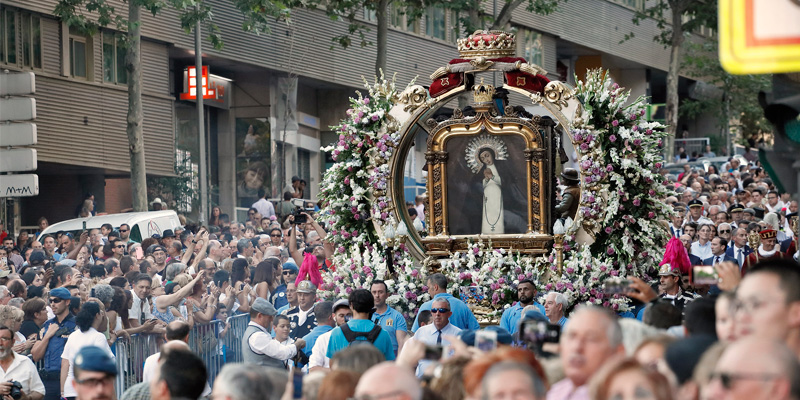 This month, our ‘Christian Heritage month by month’ column presents you the Procession of Nuestra Señora de la Paloma, one of the most important religious traditions in Madrid, Spain. Click here for more info
This month, our ‘Christian Heritage month by month’ column presents you the Procession of Nuestra Señora de la Paloma, one of the most important religious traditions in Madrid, Spain. Click here for more info
The tradition of the procession of Nuestra Señora (Our Lady) de la Paloma is thought to have started in the second half of the 19th century in Madrid, out of the devotion of many citizens to the painting of the Virgin Mary previously now installed in the church situated in Calle de la Paloma.
The chapel dedicate to our Lady of the Loneliness (or Sorrows) – one of the titles of the Virgin Mary – was built in 1795 thanks to the support of the Royal family, and later enlarged to host more pilgrims and faithful coming to pray for her intercession.
The procession takes place every year on 15 August, feast of the Assumption of Mary, starting with Masses in the morning and culminating after the late afternoon celebration, presided by the Cardinal of Madrid or one of the Auxiliary Bishops, and attended by civil authorities. During the evening procession, Madrid’s firefighter brigades play a very important role, as the Virgin of the Paloma is their Patron Saint. Before the procession starts, they enter the church and carefully bring down the miraculous painting of Our Lady from her altarpiece, placing it on the carriage which will then be carried through the neighbouring streets.
The Virgin is welcomed by fervently praying faithful, who follow the carriage pushed by the firemen through its usual itinerary in the streets of Madrid. Once back in the church, the painting of the Virgin is placed back in the altarpiece of the presbytery by the firemen, while the people sing the Salve Regina.
The yearly procession is considered one of the most important religious traditions in Madrid and an example of intangible religious heritage that fosters a sense of belonging and community among the citizens and faithful. It exemplifies the living dimension of religious heritage and the value of such traditions for today’s societies.

